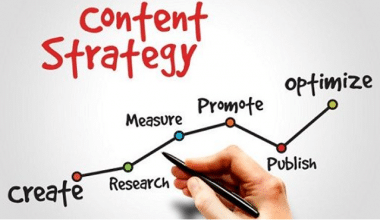One of the most difficult tasks in marketing is defining a target audience. However, after you’ve identified who your target market is, you’ll be able to execute more relevant advertising with greater results. Here’s a step-by-step guide to defining a target demographic and reaching out to them using social media. It covers the examples, types, and importance of defining a target audience; plus all you should know navigating in the world of marketing. And like always, we will start with a simple definition of a target audience.
Target Audience Definition
A target audience is a group of consumers a business is trying to reach through advertising/marketing.
In more simple terms, it is the group of people you want to reach with your marketing efforts.
The goal is to find a group of people who share your ideal customer’s culture, ambitions, hobbies, and challenges.
Basically, you’re looking for folks who will buy your products.
According to statistics; Every year, $37 billion is squandered on commercials that fail to engage the intended demographic.
Your target audience may be a niche or broad, depending on what you market. If you were selling shoes, for example, your target audience would be diverse because men, women, and children all wear shoes. Perhaps, on the other side, you specialize in high-performance sports shoes. Then your target market would be more specialized — elite athletes aged 20 to 40 who have expressed an interest in running or who have completed a marathon. In either case, it’s critical to define and categorize your target demographic so you can figure out what kind of creative messaging would resonate with them and which channels they favor.
Before we get into the specifics of defining your audience, let’s define “personas” because many individuals confuse them with a target audience, which can lead to time and money being wasted.
What’s the Difference Between a Persona and a Target Audience?
I won’t repeat the definition of a target audience because you already know it.
In any case, the following information is used to define the target audience:
- age
- gender
- education background
- purchasing power
- social class
- location
- consumption habits
An example of a target audience could be women between the ages of 20 and 30, residing in Los Angeles, with a bachelor’s degree, a monthly salary of $4,000 to $6,000, and a passion for fashion and decor.
If you start a business without knowing who your target audience is, you can wind up wasting all your marketing efforts — and that’s something we don’t want!
Here’s another example; Assume you run a company that offers educational toys. This means your target audience would include youngsters, mothers, education experts, or teachers.
You might also run a motorcycle shop. In this case, your audience won’t include anyone under the age of 18.
So to increase your chances of sales and profit, don’t try to reach out to everyone. In the long run, it will cost you more and reduce your profit margins.
Let’s talk about “personas” now.
What Is a Custumer Persona and Why Do You Need One?
Customer personas are buyer profiles that would be your ideal customers in marketing.
Personas are made-up characters who have traits similar to your real clients. They’re based on target audience data and can help you better target your marketing efforts.
A persona is a hypothetical individual who would be interested in what you have to offer because they are emotionally attached to your brand, and you must make an attempt to convert and retain them as a client.
A persona necessitates far more in-depth and extensive research than your audience because it includes:
- personal characteristics
- purchasing power
- lifestyle
- interests
- engagement in social networks
- professional information
A typical example is; Mariana, a 22-year-old blogger who currently resides in Miami, Florida. She holds a bachelor’s degree in journalism. She has a site where she gives cosmetic guidance and fashion and decor advice. Mariana is always interested in local fashion events and attends meetings with other professionals in the industry. She is concerned about what others see on her social media platforms because she is a digital influencer. In her spare time, she enjoys doing indoor hobbies and going to the gym.
So in general, the major distinction between a persona and a target audience is that a target audience considers the entire audience in a more generic sense, whereas a persona considers a specific segment of the audience.
Why Is It Important to Find Your Target Audience?
A ton of individuals have, in the past, made the mistake of not determining their target audience from the beginning. They just go ahead to develop content and then market to anyone looking for traffic.
That’s a little too broad because not everyone looking for traffic is a suitable fit for my ad business.
They may simply want to be popular on Instagram or YouTube, which many people do–but this does not help me earn more money.
Surprisingly, there are more people who want to learn about Instagram followers than there are people who want to learn about SEO.
It’s easy to do keyword research once you’ve identified your target audience. So even though the search traffic for Instagram and Twitch is high, an insurance blogger shouldn’t waste too much time writing about them.
Those types of traffic tend to bring in irrelevant traffic, wasting both time and money.
When you understand your target audience, you can conduct proper keyword research and identify opportunities that not only drive traffic but also income.
The Benefits of Knowing Your Target Audience
Every marketing plan and approach you implement will be defined by your target audience data. While running an ad during the Super Bowl may seem like a terrific means to get your message in front of as many people as possible, it is also costly. Furthermore, only a quarter of the people watching your video will be interested in what you’re selling. Knowing that your target audience reads a particular publication or watches a particular show means that your advertisement will be viewed by a smaller number of people, but the appropriate people.
Ads in running periodicals, for example, may be a better fit for your target demographic if you offer running shoes. It’s critical to choose the right medium for your marketing efforts if you want to see a return on your investment.
Understanding your target market allows you to create relationships and better engage with customers, in addition to enhancing ROI. You can create content that appeals to specific personalities, as well as brands that reflect the interests and values of those who are most likely to buy the product. This is especially crucial at a time when consumers demand every ad to be highly targeted and individualized. In fact, 80% of customers say they are more likely to do business with a company that provides individualized service.
Types of Target Audience
A target audience can be further divided into different types based on their intent, geography, interests, and other factors. Let’s look at some examples of how you can segment your target audience:
Interest
This divides your target audience into different types based on their varied interests, such as hobbies and entertainment preferences. This can assist you in developing a data-driven, highly tailored message that helps you to engage with your audience in meaningful ways, resulting in increased brand loyalty.
Purchase Intention
It defines categories of consumers seeking a specific product, such as a new entertainment system or automobile. This will assist you in determining your audience’s pain points, allowing you to produce customized messaging that answers their needs.
Subcultures
Groups of people who share a common experience, such as music genres or entertainment fandoms, are referred to as subcultures. You can better comprehend who you’re seeking to connect with by understanding some of your target audience’s motives.
What’s the Difference Between a Target Market and a Target Audience?
A target market is a group of customers or audience to whom a business intends to sell or reach through marketing efforts. A target audience is a group or part of a target market to whom ads are targeted. As a result, the target audience becomes a more narrow subset of the target market.
To return to the running shoe example, let’s imagine your target market is marathon runners, but you’re running a special in Boston. Prospective Boston Marathon runners, not all marathon runners, would be the target audience for an ad promoting the offer.
And because it is a subset of a larger market group, target audience and target market are frequently interchanged. Target market, on the other hand, does not always imply a target audience.
Understanding the Roles of Your Target Audience
Going beyond studying their demographic information and understanding what position they play in the buying journey is a critical step in understanding your target audience. The following categories are frequently used to categorize these roles:
The Decision Maker:
This is the individual who makes the final purchase decision. In some cases, the decision-maker and the backer are the same persons, while in others, they are not. You must acknowledge and gear adverts to the decision-maker when different. Take, for example, the Old Spice brand’s reinvention in 2010. The company wanted to modernize its product in order to appeal to a younger audience. During their research, the team realized that, while men may eventually wear their product, women were the ones who bought it, prompting their creative team to focus on this demographic.
The Supporter:
While the supporter does not have the authority to make the decision, they do have a significant impact on whether or not an item is purchased. A youngster, for example, may not make a purchase directly, but if they desire something for Christmas, they can influence the selection. This is why it’s important to create messaging that appeals to both types of customers.
7 Ways to Identidying Your Target Audience
You must spend time examining the data you obtain from consumer encounters, evaluating current buyers and purchasing trends, and optimizing as new information becomes available to define your target audience.
The procedures below should assist you in determining your target audience:
#1. Conduct Customer Interviews and Analyze Your Customer Base
Looking at who already buys your product or service is one of the best ways to figure out who your target audience is. What is their age, where do they live, and what are their hobbies? Engaging on social media or sending client surveys are two fantastic ways to learn this.
#2. Conduct Market Research and Identify Industry Trends
Examine your industry’s market to see where there are gaps in service that your product can cover. Also, examine similar product trends to identify where others are concentrating their efforts, and then focus even more on your product’s distinct value.
#3. Analyze Competitors
Marketers may learn a lot from competitors by observing who they sell to most frequently and how they do it. Do they communicate through online or offline channels? Do they want to target the decision-maker or the supporter?
#4. Develop Personas
Personas are a great approach to obtain a better understanding of the different groups that make up your target audience.
This is especially useful if your product appeals to a broad range of customers. Personas help you figure out your target market’s overall demographics, personalities, and wants.
Personas are generated using data, surveys, digital engagements, and any other information available to marketers in order to provide a more complete picture of their customers.
#5. Define Who Isn’t in Your Target Audience
There will undoubtedly be consumers that fall into your target demographic yet do not respond to marketing messages. When establishing who your audience is and who it isn’t, be as specific as possible. Is your community made up of women, or men aged 20 to 40? Knowing this will prevent your teams from wasting money on ad segments that aren’t profitable.
#6. Continuously Revise
You’ll have a better grasp of your target audiences as you collect more data and connect with customers. To get the best outcomes, you must constantly optimize and hone personas based on this data.
#7. Take Advantage of Google Analytics
Google Analytics provides a wealth of information about the people who visit your website. This data can be used to uncover critical insights such as which channels your target audience is using or what kind of content they’re most interested in, allowing you to make more data-driven decisions during the media planning process.
6 Questions to Consider
It’s hardly rocket science to figure out who your target audience is. It all boils down to a few straightforward questions.
There are six of them, to be exact.
After you’ve answered each of the questions below, you’ll have a good idea of who you’re aiming for.
#1. Who Are They?
When considering who might make up your target audience, think about the people who identify with your brand.
Monitoring who follows, likes, shares, and comments on your postings on social media sites like Facebook, LinkedIn, YouTube, and Instagram is one method to find out.
If someone is willing to communicate with you, they are most likely your target.
In many cases, your target audience isn’t on social media, but they buy from you or join up for your services on a regular basis.
Even people who have only purchased from you once must be considered part of your target audience, as they may purchase again.
It’s pointless to put in a lot of effort to sell if you don’t put in the same amount of work to keep the consumers you currently have.
Customers enjoy being treated as human, which is why the post-sale process is so crucial. Even after the sale is over, your relationship with the customer must continue.
#2. What Are Their Biggest Difficulties, Problems, or Desires?
What you think is cool, intriguing, and beneficial to you may not be beneficial to the customer.
When it comes to defining the difficulties, problems, and aspirations of your target audience, don’t think of yourself. Consider how you would feel if you were in their shoes.
Make no offers based on your feelings. Make them based on facts, previous experiences, and an understanding of the behavior of your potential clients.
Recognize the most pressing issues that your audience is confronted with in order to assist them in overcoming them.
#3. Where Do They Look for Information Online?
Everyone requires knowledge.
Every day, we are bombarded with vast amounts of data, but where do you turn for answers when you need them the most?
Determine which communication channels are most appropriate for your target audience and try to communicate with them using a language that is unique to their world.
For example, I know that my target demographic reads business blogs and consumes information on social media platforms such as YouTube and LinkedIn.
#4. What Real Benefit Do You Offer?
Everyone wishes for solutions to their issues and for their lives to be made easier. This is a universal urge, and your target audience is no exception.
Consider your product and the problem it solves for a moment. What are the advantages of your product or service? Exactly what can it do to address these issues? What is the primary value proposition?
With so much rivalry, you must endeavor to uncover your niche’s competitive advantage and constantly develop your product by providing something additional that others do not. A better customer service, a free tool, or a free trial period, for example.
#5. What Negatively Draws Their Attention?
Being upbeat helps a lot, but thinking about the drawbacks can also be beneficial, especially when it comes to target audience.
Instead of focusing on what your audience wants, consider what they don’t want and what they want to avoid.
You may have a better chance of capturing your potential clients if you have this useful information.
The first step toward gaining their acceptance is to avoid what they consider negative. After that, all you have to do is use various marketing methods.
#6. Who Do They Trust?
To your target audience, trust is crucial. Nobody buys something or hires someone from a company they don’t know or trust.
This is why Amazon reviews are read and considered so valuable by vendors. They understand that it fosters trust and has aided Amazon in becoming a trillion-dollar corporation.
Despite the fact that it is the last question, it is one of the most crucial.
Your company’s reputation is extremely important. Taking care of your client relationships is critical since they distribute information about your business on the internet and to their friends and family.
Customers will be more encouraged to buy from you if you have good reviews, pleasant remarks, and a solid reputation.
How to Create Target Personas with The Right Demographics
We’ve already proven that building personas are a useful tool for gaining a better understanding of your target audience. Customer interviews combined with market research can provide you with a deeper understanding of what your clients read, think, and value. This gives you a good idea of which sources your audience uses and trusts. Consider the following demographics and identifiers when creating these:
- Age
- Gender
- Location
- Hobbies
- Income
- Education level
- Profession
- Marital status
- Who they trust
- What they read/watch
Also, take a look at the following:
- Your existing clientele
- Who your competitors are going after
4 Real-World Examples of Target Audiences
The Limited
The basic ideas for determining your target audience can be traced all the way back to the dawn of marketing. In their 1979 annual report (as mentioned in the textbook Retail Marketing Management), the clothing store, The Limited characterized their target audience as follows:
“The Limited’s target market is females aged 16 to 35.” She is a working woman who lives in or near a major urban area, and she is educated, rich, outgoing, fashion-conscious.”
Since that statement was written 40 years ago, the ideas for defining a target audience definition have remained mostly unchanged. (Though the brand would certainly say it today in a slightly different way.) Belk, the parent company, continues to explicitly target the group that The Limited defined in the 1970s.
What’s changed is that you now have a plethora of tools at your disposal to assist you in conducting social media audience research.
#2. Zipcar
Let us fast forward a few decades. The following is Zipcar’s brand positioning statement, as mentioned in Kellogg on Marketing, a classic marketing literature. The target audience is defined in the first half of the statement:
“To city-dwelling, educated, technologically savvy consumers concerned about the environment that future generations will inherit, Zipcar is the car-sharing service that allows you to save money and reduce your carbon footprint, making you feel like you’ve made a smart, responsible choice that demonstrates your commitment to environmental protection.”
It’s worth noting that Zipcar isn’t targeting all residents of a certain city. They aren’t even targeting all of the folks who don’t own a car in a given city. They’re specifically aiming for those who:
- are residing in a city
- posses a specific level of education
- are at ease with technology
- concern themselves with the environment
All of these are interests and behaviors that Zipcar can target with social ads. They also aid in the direction of the company’s entire social media marketing plan. This is evident in this World Environment Day thread discussing sustainable habits.
#3. Tourism Australia
In your target audience definition, you may not need to include all demographic characteristics (such as age and gender). In some cases, especially when it comes to social ad targeting, it’s more crucial to concentrate on your target audience’s activities and reasons.
Tourism Australia’s target audience is comprised of the following individuals:
“High-value tourists who are inspired by [Australia’s] offerings and are most likely to visit Australia for their next vacation or business occasion.”
Although this target audience statement appears to be broad, Tourism Australia looked deep into the data to narrow down their target audience. They know, for example, that their target audience is:
- travels vast distances on a regular basis
- intends to take longer excursions to see more of the nation
They also looked into why their target market travels. Some of them include those:
- looking for unique experiences in the area
- finding out about the world
- visiting “trendy” and “cool” locations
They then went a step further. Also, they used the data to create target audience definitions in each of their main geographic markets. They even discovered how long in advance tourists are likely to schedule a trip.
#4. GANT
According to GANT, a lifestyle and athletic brand, its audience includes “25-45 year old male and females with university degrees, cosmopolitan lifestyles, and a thirst to explore and grow.”
They devised a digital marketing plan centered on a YouTube series with this target group in mind. It’s titled “Couple Thinkers,” and it features celebrities and motivational speakers.
They marketed the show on social media and teamed with Esquire UK to reach a bigger audience with the content.
How to Reach Your Target Audience
After you’ve built personas, you’ll need to find media that caters to these specific groups. Here are some resources to help you get started:
Media Kits
Publishers’ media kits provide a clear picture of the audience segments they target. Depending on the brand, these can be broken out by job titles, income levels, or interests.
To effectively utilize this on the flip side, marketers would have to ensure that secondary audiences aren’t included in these totals when deciding where to spend ad expenditures. Magazines, for example, are frequently shared with friends and family. This lengthy shelf life is advantageous to marketers, but it should not be taken into account when determining where to buy because it is an estimate. Furthermore, when making judgments or negotiating prices, consider the paid subscribers.
Nielsen Ratings
Nielsen can anticipate how many households will watch a show based on statistical samplings. Although prime time may appear to be the best choice for reaching a broad audience, you may find that more niche shows on the early or late fringe can reach your target group for a fraction of the price. This is especially true as television becomes increasingly fragmented and as more channels and programming are added.
Social
You may target adverts based on demographics and interests on social media. Despite the fact that the target audience may be precise, various populations consume media in different ways. Some Instagram users may not be responsive to business-related ads, while they may be more receptive on Facebook. It’s also important to track the success of various kinds of ads on these platforms, such as display vs. native. Try out a few different platforms to discover which ones get the best results.
Third Party Information
Marketing analytics solutions like the Marketing Measurement and Attribution Platform can assist you to figure out which outlets or television show your target audiences watch. Examine how these companies determine how to reach the target audiences when choosing a partner. Do they have media partnerships or are they using obsolete data?
How to Communicate with Your Audience at the Appropriate Time
It’s not just about understanding where to reach today’s empowered consumers; it’s also about knowing when to contact them. Marketing at the appropriate time will pay off as consumers become increasingly skilled at filtering out messages.
To ensure right-time marketing across numerous platforms, there are several critical considerations:
Television
Viewers no longer have to sit through ads thanks to the invention of DVR. This means that even if you have the right target audience, you can’t ensure that advertising displayed in the middle of a show’s break will be seen.
So, focus on becoming the first commercial before a break or the last one after a break when negotiating television spots. Live television is even better (including the late-night news or sporting events).
Radio
Because listeners frequently switch radio stations during commercial breaks, schedule advertising close to the start or end of the break, if possible. Also, pay close attention to DMAs (Designated Market Areas). Nielsen provides DMAs, which are based on signal strength. The Boston market, for example, also encompasses Rhode Island and Southern New Hampshire. It’s imperative to remember this; while the radio is an excellent tool to reach local consumers, it may also attract listeners from outside your target area.
Consider the timing when booking it with an outlet. Because Fridays are a popular day for people to take off work, sending an email on a different day may result in a higher open rate (unless the data says otherwise).
Disadvantages of Target Audiences
Although target audiences are a useful tool, marketers should keep in mind that there may be other opportunities in the market. If a brand has to reposition itself, a different demographic might be a better fit. There may be further applications for products that have not yet been examined. Combining target audiences with analytics technologies might help detect and capitalize on some of these missed chances.
Target Audience FAQs
What is a target audience example?
Adults, teens, children, mid-teens, toddlers, men, and women are just a few examples of target audiences. To effectively sell to any given audience, you must first become acquainted with your target market’s habits, behaviors, likes, and dislikes.
Who is my audience?
A collection of people that you want to read your material is referred to as your audience. When writing, it’s crucial to keep your audience in mind so that you can tailor your content to their needs.
What are some examples of audiences?
The crowd in the seats at a sporting event is an example of an audience. People that listen to a specific morning radio show are an example of an audience. People who enjoy seeing a particular kind of film are an example of an audience. Those who are listening to a specific radio or television program.






